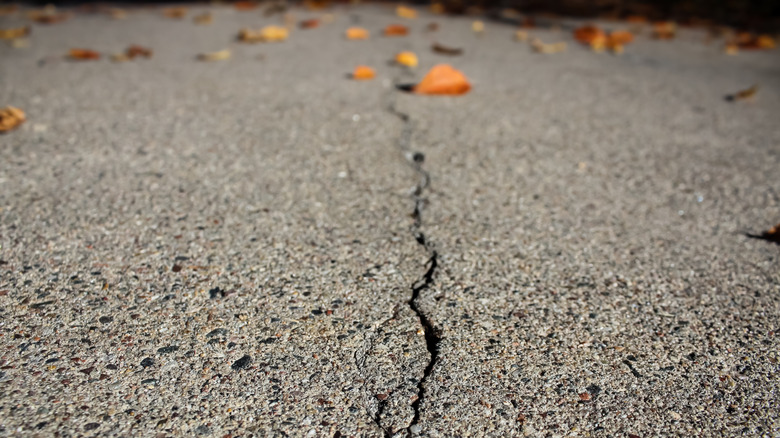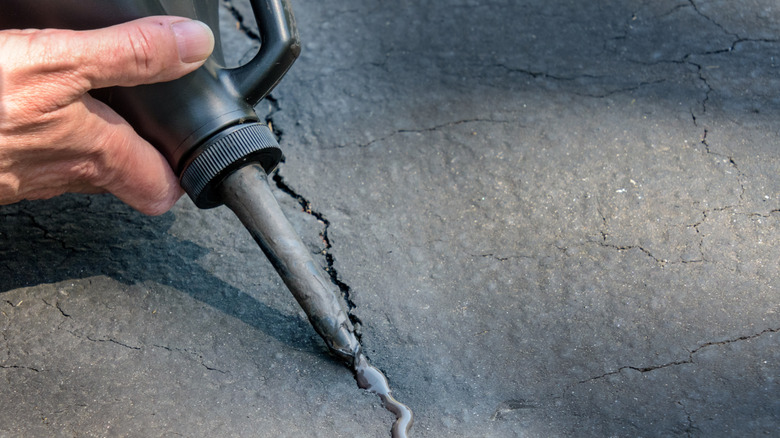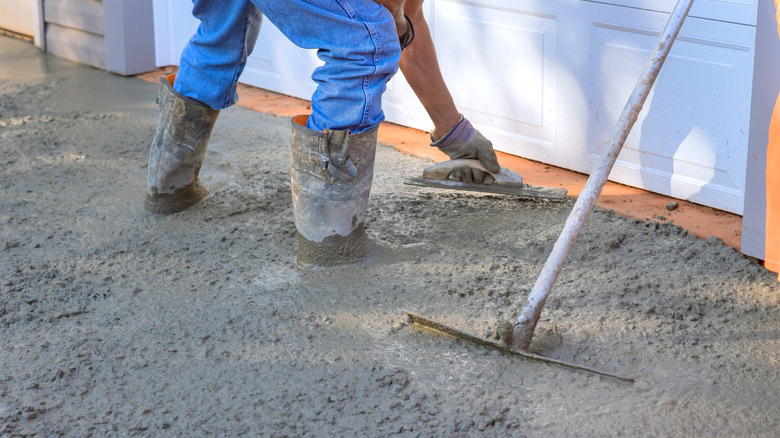Say Goodbye To Cracked Concrete Driveways: Try This Cheap Fix Instead
While not the end of the world, finding a large crack in your driveway can be a frustrating issue to deal with. What you may not realize about driveway cracks is that, while seemingly harmless, they can be detrimental to your driveway, and they are not going to fix themselves. That's even more true in colder climates that have numerous rotations of freezing and thawing. As the crack in the driveway grows larger, the more it will end up costing you in future repairs. Plus it's also incredibly unsightly, think of the long black lines of sealant on highways and streets.
Specifically for colder climates, water that gets inside the pores of a concrete driveway and freezes. During the freezing process, the ice expands and can cause cracks to form. If cracks are already present, the expanding ice can make them even larger and potentially more dangerous.
One of the easiest ways to stop those cracks in their tracks is to use a concrete crack sealant to fill in the space. Available at nearly any home improvement store, concrete crack sealant is an affordable way to keep your driveway in one piece. While it seems easy, how does concrete sealant actually work and fill in those cracks?
The best concrete crack sealants and how they work
There are numerous options for concrete crack sealant, although the top products on Amazon come from brands like Mollor, DAP, and UGL. The Mollor product, called Waterproof Sealant & Patch, is 8.8 fluid ounces, costs under $15, and has some of the best reviews on the online marketplace of any concrete sealer. Granted, there are only 41 reviews of the product. The DAP 37584 Liquid Cement Crack Filler has been reviewed over 3,000 times and has a rating of 4.4 out of five. That costs just over $15 for one quart. The UGL 30507 Drylok Masonry Crack Filler comes in packs of two 10.5-ounce bottles and costs just over $16. This product has over 500 reviews and a 4.6 out five rating.
As for how concrete crack sealant works, it is relatively simple. Step one in fixing a driveway crack with concrete crack sealant is to ensure that the crack is clear of debris. This means making sure dirt and any loose concrete is removed. Next is to prep the sealant. Many sealants use caulk guns, so be sure to cut the nozzle of the tube at an angle just smaller than the crack. Don't forget to clean up your caulk gun afterward.
From there you need to apply the sealant into the crack and then smooth the sealant after it's been applied. This will make sure it sits on the same level of the driveway. After that you're pretty much done, although you can blend in the sealant to make it look like the rest of the driveway.
Concrete crack sealant limitations
While concrete crack sealant sounds like a great solution to fixing your driveway, there are still a number of limitations. The first and biggest limitation is that concrete crack sealants are just a temporary fix. Putting sealant over a crack is kind of like putting a band-aid over a cut that needs stitches. It looks nice, but it really won't do much.
Another big limitation of concrete crack sealant is that it can crack or shrink, leading to more damage in your driveway. This can be caused by weather and moving over the sealed cracks on foot or in your vehicles.
Beyond breaking down over time, improperly filled cracks can actually trap moisture and, in time, cause even more damage to your driveway. As we stated earlier, one of the ways cracks in driveways form is through the freeze and thaw cycle. Moisture in the sealant can go through the same cycle.
If your plan is to add sealant as a short-term fix with the intention to hire a professional to repair the crack in the future, you may want to think again. When the professionals start to take apart your driveway, the dried sealant will also need to be removed and cleaned out. This adds more time and potentially more cost of labor to the project.


